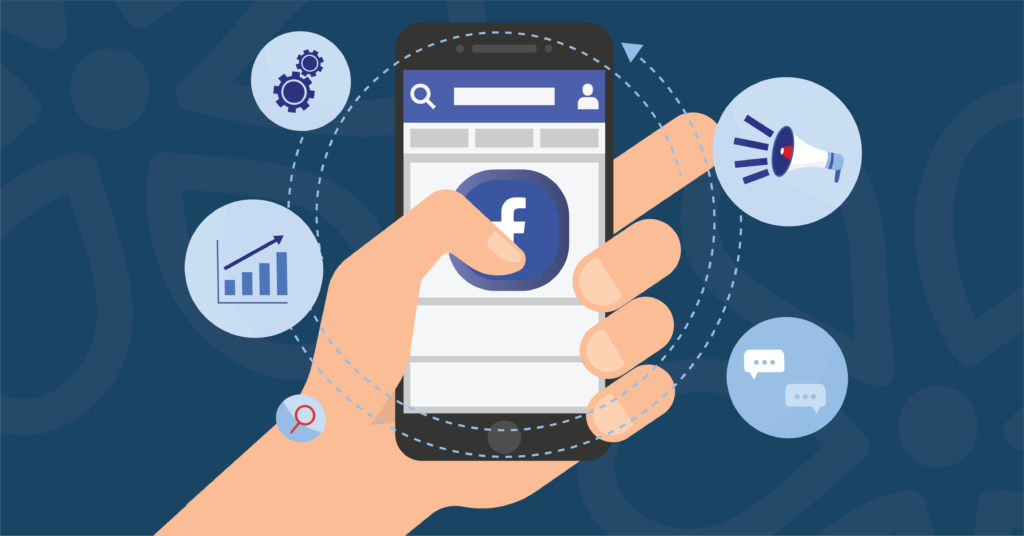Digital advertising drives brand success through diverse formats and channels. Types: performance, PPC, SEO, native/display ads, paid social, email, content.
Digital advertising is every brand’s key to success. As our world continues to move away from physical media in favor of online content, digital advertising is becoming the primary path to connect with customers and is an excellent way to grow as a business.
But with more digital channels to advertise on, more formats to consider, and more internet users than ever before, excelling in the digital sphere takes resources and expertise.
Learn about how you can implement the most effective digital advertising strategies to craft ad campaigns that build brand awareness, reach new audiences, and push your brand further.
What Is Digital Advertising?
Digital advertising, or online advertising, is the marketing of a brand, product, or service through an online channel. In contrast to traditional advertising, it includes a variety of digital ad formats, including image, text, audio, video, banner ads, interactive ads, and more – and happens on websites, streaming services, and social media. You’ll run into a digital ad almost anywhere you go on the web.
Types of Digital Advertising
As digital media has expanded, so has the number of online advertising strategies. Traditional marketing channels like billboards and print ads shouldn’t be left behind, but with the integration of more options, like mobile app advertising, brands can get real-time insight into the quality of their advertising efforts and reach more people than ever before.
The opening for success in digital advertising is wide. Small businesses can succeed just as much as larger ones, and there are opportunities for data-driven creativity at every turn. Take a look at some of the most popular types of digital advertising.
Performance Marketing
Performance marketing is a combination of paid advertising and brand marketing. A level of accountability is present in performance marketing efforts because there is an expected measurable result. Businesses pay when a specific action is completed– such as a sale, lead or click. This translates well to digital advertising, where there is a desire to draw clear lines of cause and effect to dollars spent and goals achieved.
Other digital marketing channels, such as paid search, native advertising, and paid social, all fall under the overarching umbrella of performance marketing. As you approach these different channels of digital advertising, keep the foundations of performance marketing top of mind.
Paid Search Advertising/PPC
If you have ever typed in a search query on Google, you’ve noticed the sponsored results that are prominently at the top of the page. Businesses looking to boost clicks to their website should explore advertising with search advertising like Paid Search and Pay-per-click (PPC).
PPC is when you bid on target keywords to show up in the sponsored results and pay a fee for each click received. By placing an ad on a search engine results page (SERP), your business will target potential customers looking for what you offer. Popular platforms for paid search include Google Ads, Bing Ads, Facebook Ads, LinkedIn, Twitter, AdRoll, Pinterest, and Taboola.
Before getting started, finding keywords that resonate with your target audience and match their searches is essential. Comprehensive keyword research is key to achieving a good ROI since you will be bidding against other businesses for clicks.
Search Engine Optimization
Closely aligned with paid search advertising is SEO: search engine optimization. While paid searches place your ads at the top of search results, SEO can help your pages show up for specific searches without paying for placement. Developing paid search ads that incorporate well-researched keywords is important, but they may be even more important for SEO.
While paid search advertising includes some SEO (when done properly), SEO can also stand alone as a digital marketing strategy. It involves ensuring any content your brand releases on your website, socials, or otherwise, is optimized to be relevant for search engines and people. That means ad copy with relevant keywords, landing pages with intentional title tags, meta content, image alt text, and ensuring you offer high-quality content that helps readers move along the sales path toward meaningful conversions.
Native Advertising vs. Display Advertising
Native ads and display ads are both used on websites, but their objectives and impact are different. Display ads, often found along the margins of a standard web page, are designed to stand out as paid advertising in order to get impressions and reach, while native ads are included in the actual content of the web page. Native ads have the same look and feel of the website, making them an ideal choice for other objectives, including clicks, site visitors, and sales. Affiliate marketing, also known as Comparison Shopping Articles (What is The Best X), is an example of native advertising.
Native advertising is paid content such as articles, infographics, or videos featured in-feed or on websites where your target audience is most likely to consume content. With the goal of providing real value to your target audience, native advertising can bypass ad blockers designed to suppress other digital advertising efforts. They’re also more effective than display ads for use on mobile devices – which is important to consider when you remember the number of smartphone users.
Although native ads have a higher cost-per-click (CPC), they offer better click-through rates than display ads, which can give you a better return on investment.
To add native ads to your digital strategy, build a customer profile by considering other websites your ideal user might visit and industry-related topics they might be interested in. Then, you can choose a publisher and a distribution strategy to leverage content discovery platforms to help put your content in front of the right potential customers. You may also work with a business to develop quality content that is on-brand for both parties and speaks to the target audience. Just be sure to determine specific goals and measurable metrics to make it easier to fine-tune campaigns and continue to encourage engagement.
Paid Social
Paid social media advertising includes any marketing campaigns where you pay either the platform or a creator to advertise your brand. For example, you create a video ad to host on TikTok. As users scroll through their For You Pages, they see your ad pop up and can click on it to be directed to your landing page. Paid social media can also include influencer marketing, where you pay an influencer to create authentic content about your brand and post on their channel. Social media ads are particularly effective for brands because of their reach. A few billion people worldwide use some form of social media, meaning that you have a good chance of getting in front of the right eyes – especially when you choose your platform and content wisely.
Paid social digital advertising efforts focus on the core social media platforms – Facebook, Pinterest, Twitter, Snapchat, Instagram, LinkedIn, YouTube, and TikTok. The types of advertising options on these platforms vary and should be evaluated based on your business’s objectives. Pay-per-click advertising, branded or influencer-generated content, and display ads are all examples of paid social media. They can work separately or in tandem for a well-rounded paid social strategy.
To get started in choosing which platform is right for your brand, consider how the demographics and intent of each network aligns with your business. Your goal is to choose the network where your target audience is hanging out and then begin to evaluate what types of digital advertising strategies your competitors have or have not deployed on the platform.
Experiment with various advertising options while always trying to ensure that your efforts blend in with organic content on the networks.
Email Marketing
Even with the growing interest in social media as an area to put digital marketing ad spend, email marketing is still an important space. Email marketing gives your brand complete control over your messaging and is a cost-effective way to reach audiences, offering a stable and affordable option for many e-commerce brands.
Creating a digital marketing strategy that incorporates multiple venues is key here. Email marketing works best when you use it alongside paid social, paid search, and other strategies. For example, you can get new leads for your email lists from social media, search engine marketing, and other venues, then use email marketing to continue guiding users down the funnel for increased sales.
Content Marketing
Among the many digital advertising strategies, content marketing bleeds into all other marketing tactics. Brands create content like blogs, social media posts, video content, and newsletters to enhance brand awareness, educate audiences, build connections, and more. The most important part of content marketing is creating exciting and valuable content that pushes interest and engagement.
In order to be successful in other digital advertising strategies, like email marketing and social media marketing, you need high-quality content. Each channel requires a different approach to content, from short-form videos on TikTok to appetizing email newsletters. The omnipresence of content in every digital platform means spending time on your content marketing strategy will always be worthwhile.
Partnering with a content marketing agency can be a helpful tool. Instead of relying only on in-house strategy, agencies can bring a higher level of expertise and resources to boost your content marketing to match the desires of your audience.
Digital Advertising Partnerships
In our increasingly automated world, your brand’s success hinges on its ability to navigate digital advertising. And that navigation requires a deep understanding of evolving trends, a commitment to crafting strategies that resonate with target audiences, and expertise in the multitude of digital advertising strategies.
First Media’s comprehensive suite of solutions is designed to elevate your brand’s visibility and engagement. We bring the understanding and expertise to create digital advertising campaigns that resonate with users and cultivate a robust online presence for your brand.
Learn more about how you can partner with First Media to further your digital advertising strategies today.





